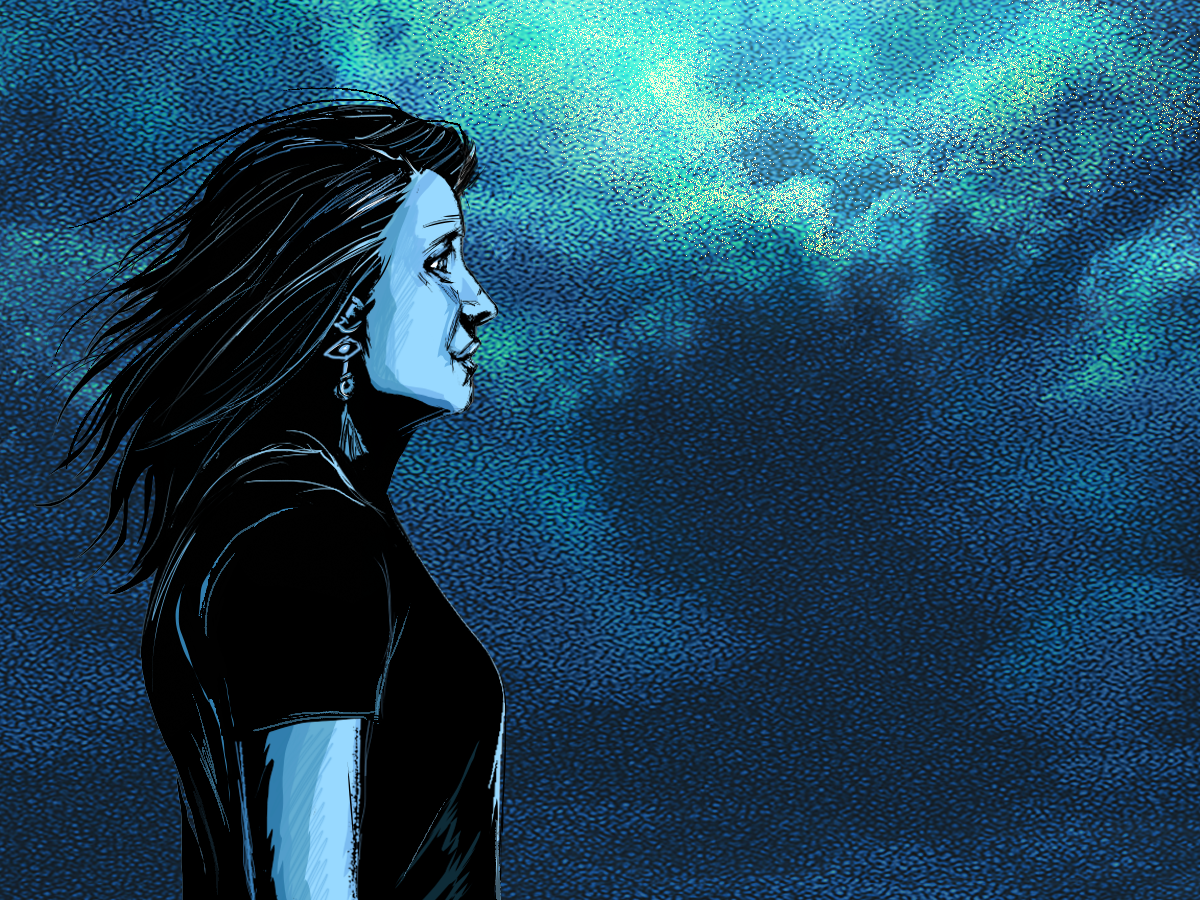
A Home at the Edge of the Storm: Emily Best and the Evolution of Seed&Spark
Sailing between Monterey and San Simeon, California, Emily Best and her father, Eric, were caught in a classic summer squall. Wind speeds around 35 miles per hour. Gusts up to 50. In their small boat, they couldn’t sail parallel with the crest of oncoming waves at the top—they’d fall over. But they couldn’t come down a wave’s other side at a right angle, either—they’d pick up so much speed, they’d sink.
A literal life or death situation. And, since Emily was steering, one that required intense focus and fear compartmentalization. Which was challenging.
Because she was 14 years old.
“I just had to pay attention to, you know, right angle at the top, turn to the right, surf down the [wave], surf back up, right angle at the top,” she said. “All I can do is steer the wave ahead of me. And the ocean does not give a shit about how scared I am right now.”
This experience has loomed large in her life since the pandemic began. As CEO of Seed&Spark, a platform that accelerates the cultural impact of creativity, her business has been thrown into a squall of uncertainty, the only constant a conditional indifference to one’s feelings. As an artist, her ability to produce new work has been challenged by threats to public health, both physical and mental. And as a wife and mother of two young children, the events of 2020 and 2021 have done nothing to make married life and parenting easier.
But examining Emily’s story reveals challenges far beyond a pandemic—in business, the arts, and in life. And they can offer lessons to those pursuing any endeavor in this most uncertain time. Seemingly unrelated events can combine in unexpected ways to define your path. Branching out from where you’re from can help you, as she often says, “find your people.” There’s no such thing as a straight line to success. And, perhaps most importantly, no successful journey comes without struggle.
Like she says, all you can do is steer the wave ahead.
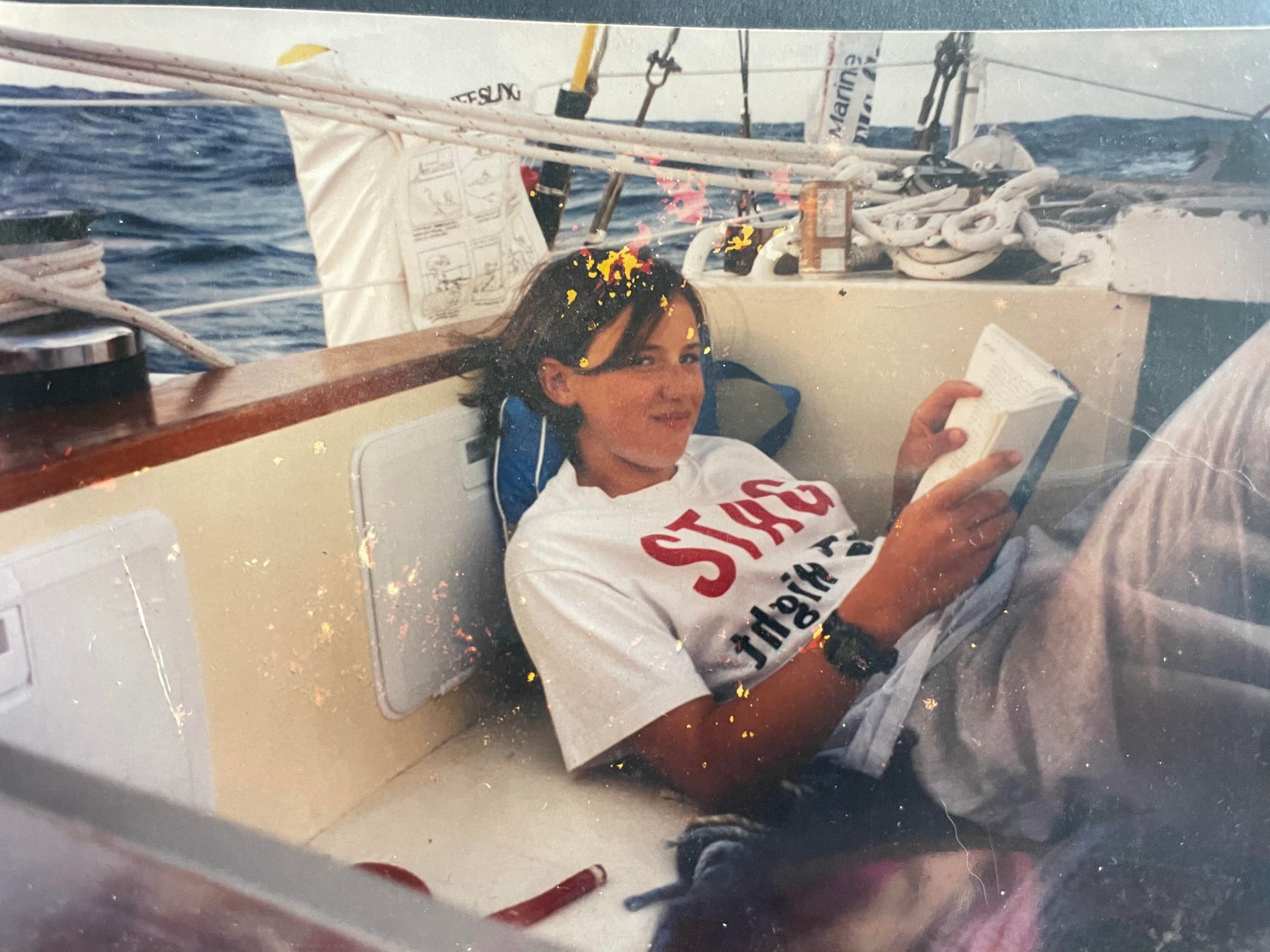
CENTRAL CALIFORNIA
The world of work, and the concept of symbiotic relationships, came early for Emily. She was plucking rabbits at an Occidental angora farm at nine years old, prepping their fur to be spun as yarn. And even though she didn’t get paid, everyone involved benefitted.
“I got a rabbit at the end of the summer for that job,” she said. “I think that was just my dad needing to drop me off somewhere. So, basically free camp for him, free labor for the farmer, and a free rabbit for me.”
Not much later, in middle school, she was stuffing envelopes for four dollars an hour at Global Business Network, the Emeryville-based strategy consulting startup where her father worked. A strong entrepreneurial sense was instilled in her very young.
But the arts entered the picture around that same time. In fifth grade, her friend introduced her to the Broadway Dance Academy, and she joined the competitive dance company, eventually doing 20 hours of classes a week. And when she got to Mira Loma High School in Sacramento, she added drama to her repertoire.
Interestingly, though supportive of her artistic exploration, her parents didn’t promote the possibility of making a living from her art—despite being storytellers earlier in life themselves. Her father worked in consulting, but had also been a journalist at the San Francisco Examiner, and her mother, a cable company executive, is a fiction writer.
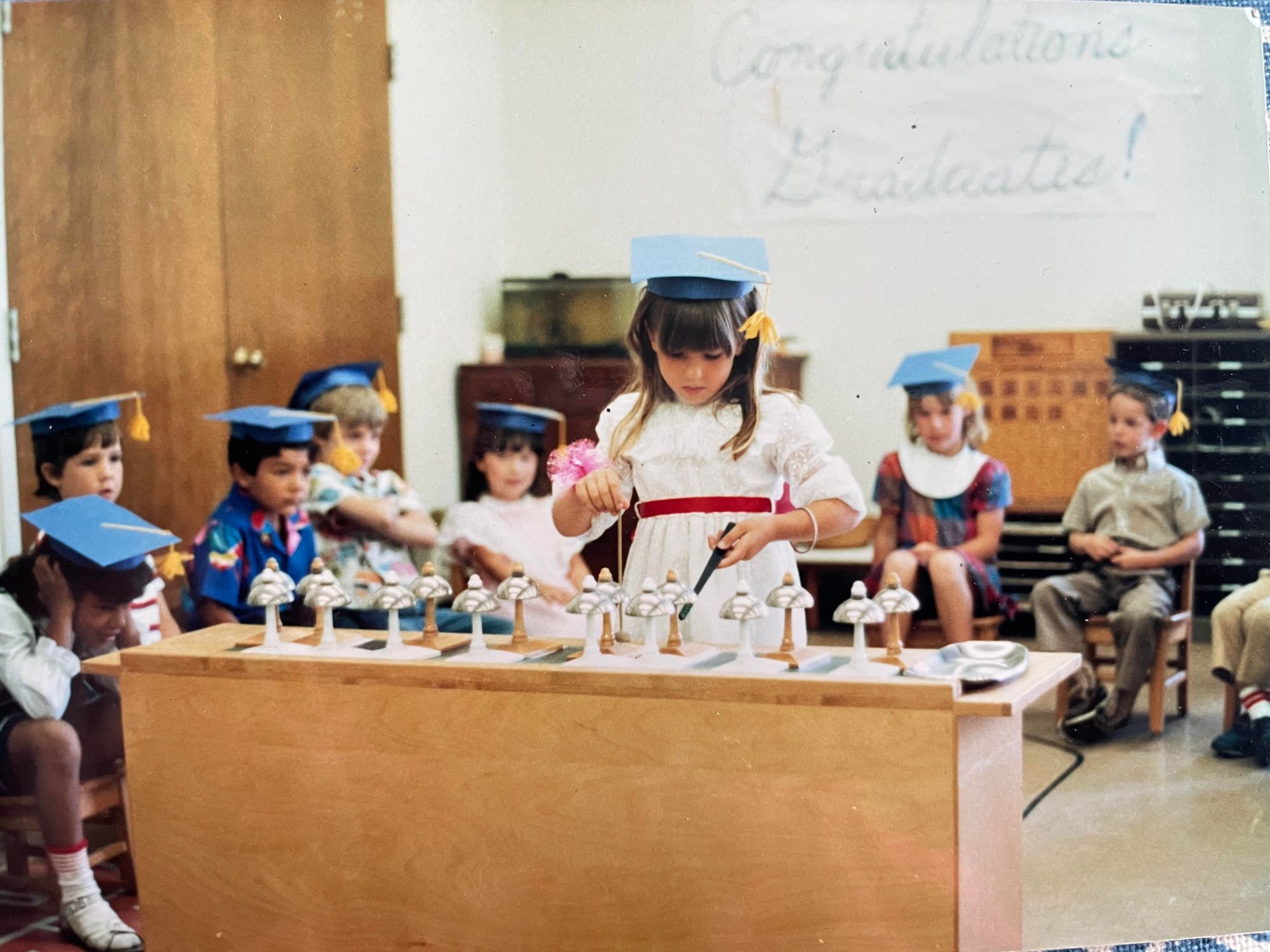
“I didn’t have a sense that art could be a profession,” she said. “It was a hobby until you grew up and got a job. I don’t think I was such a good dancer that anybody would have been like, ‘You should drop everything and do this.’ But I look back and at no point was it an option that art could take over.”
Still, the arts continued to subtly mold her. During her junior year, a soccer teammate went with her to the Tower Theatre in Sacramento to see an Iranian mystery/romance film called Gabbeh. She habitually watched Fred Astaire and Ginger Rogers films, and loved Marilyn Monroe ... but this movie changed her.
“I remember the entire time, I was like, ‘I don’t totally know what’s happening.’ It was that a movie didn’t have to be narrative in the traditional sense. It was really the first kind of non-Hollywood thing I ever saw. I actually couldn’t get out of my seat when it finished.”
Despite these exposures, though, the arts came in second place. It was a high school anthropology class that cemented Emily’s next step.
After graduating from Mira Loma, she headed to Haverford College to become an anthropologist.
HAVERFORD, PENNSYLVANIA
Once in college, Emily majored in Anthropology and American Studies. And while there, the arts continued to be a non-career-oriented part of her life. She sang a capella and in a 13-piece funk band called Hiram with a full horn section. She also studied abroad in Spain, taking art history and photography courses, and singing lessons at a local jazz conservatory.
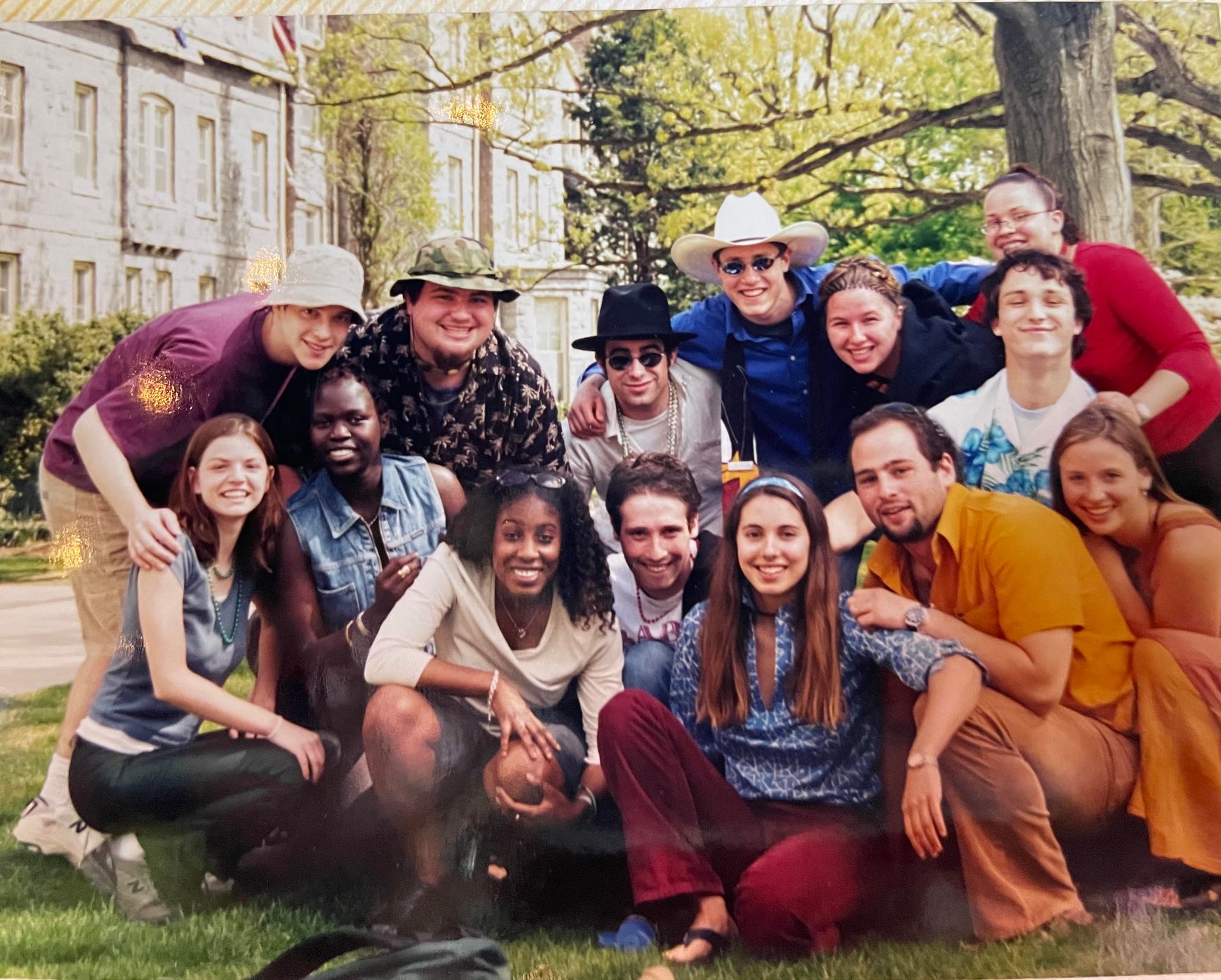
But two experiences at Haverford would prove to be her first steps toward combining entrepreneurship and the arts, as well as exploring the world of online communities.
One event became her first taste of producing:
The Vagina Monologues.
The V-Day college campaign provided free licenses to colleges to perform the play, so in addition to being cast, Emily helped run a campus production. She sold tickets, promoted the performance, and even spent two weeks building two huge plaster-of-Paris legs that sat on either side of the theater doors.
“You could walk into the vagina,” she said. “It was really fun.”
And an unmitigated success: the Haverford student population numbers about 1100, about 100 of whom are abroad any given semester, and the production sold out an auditorium that seats 750, with ticket sales raising money for anti-domestic violence charities.
The second event was the literature review for her senior thesis. After going through the anthropology program, Emily realized something: her field of study wasn’t activist enough.
“It didn’t take a position,” she explained. “So, I got to my thesis defense and said, ‘Why don’t you care about female genital mutilation?’ You can’t just study something and try to understand it in the context of its cultural paradigm. It’s fundamentally flawed. The idea that there’s such a thing as relativism really started to bother me and felt very privileged.”
She wrote a paper about it: “Carving Out Your Own Place on the Internet: An Examination of Community Generating Discourse in Web-based Body Modification Communities.”
An analysis of what Seed&Spark would eventually become:
Social networks empowering the marginalized.
“We didn’t have a term for it, so web-based communities was as close as I could get,” she said. “I was writing about the power of social networks to connect people around communities of interest to become communities of practice.”
After graduation, Emily was armed with a newfound producing skillset, and an eye for using social networks to equip those from under-resourced communities. The core mission of what would become Seed&Spark. So what did this new Haverford alum do next?
She moved to Europe to study singing.
BARCELONA, SPAIN
When Emily studied abroad in Spain her junior year, she studied separately with two singing teachers at the Taller de Musics, a Barcelona jazz conservatory, the first time she had studied singing in earnest. When she graduated, after living through the 2000 presidential election, the 9/11 attacks, and her disillusionment with anthropology, she didn’t like any of her post-grad options.
“My friends were doing the thing you do after you graduate from a cherry East Coast school, going into those early finance jobs, and a ton were going directly to grad school, which was not going to be my thing,” she said. “I knew a lot about strategic planning, and I didn’t think 22 year olds had any interesting place in it.”
So, she spent her summer after graduation waiting tables to earn money, and moved to Barcelona that September, enrolling full-time at the Taller de Musics to study jazz singing. Once in the program, she realized all the music theory classes were in Catalan. She found a translator ...
Who would eventually become her first husband.
But midway through her first year there, she lost her voice. Performances in smoky clubs led to a node on her vocal cords. She was forced to stop singing. She stopped studying, and instead waited tables, taught English, and led tours for English bachelor parties.
Art had to take a back seat.
“That was the point where I felt like the bottom dropped out of my creative life,” she said.
After living there for two years, Emily and her boyfriend came back to the United States in 2005, and she took her next step toward creating her company.
She started managing restaurants.
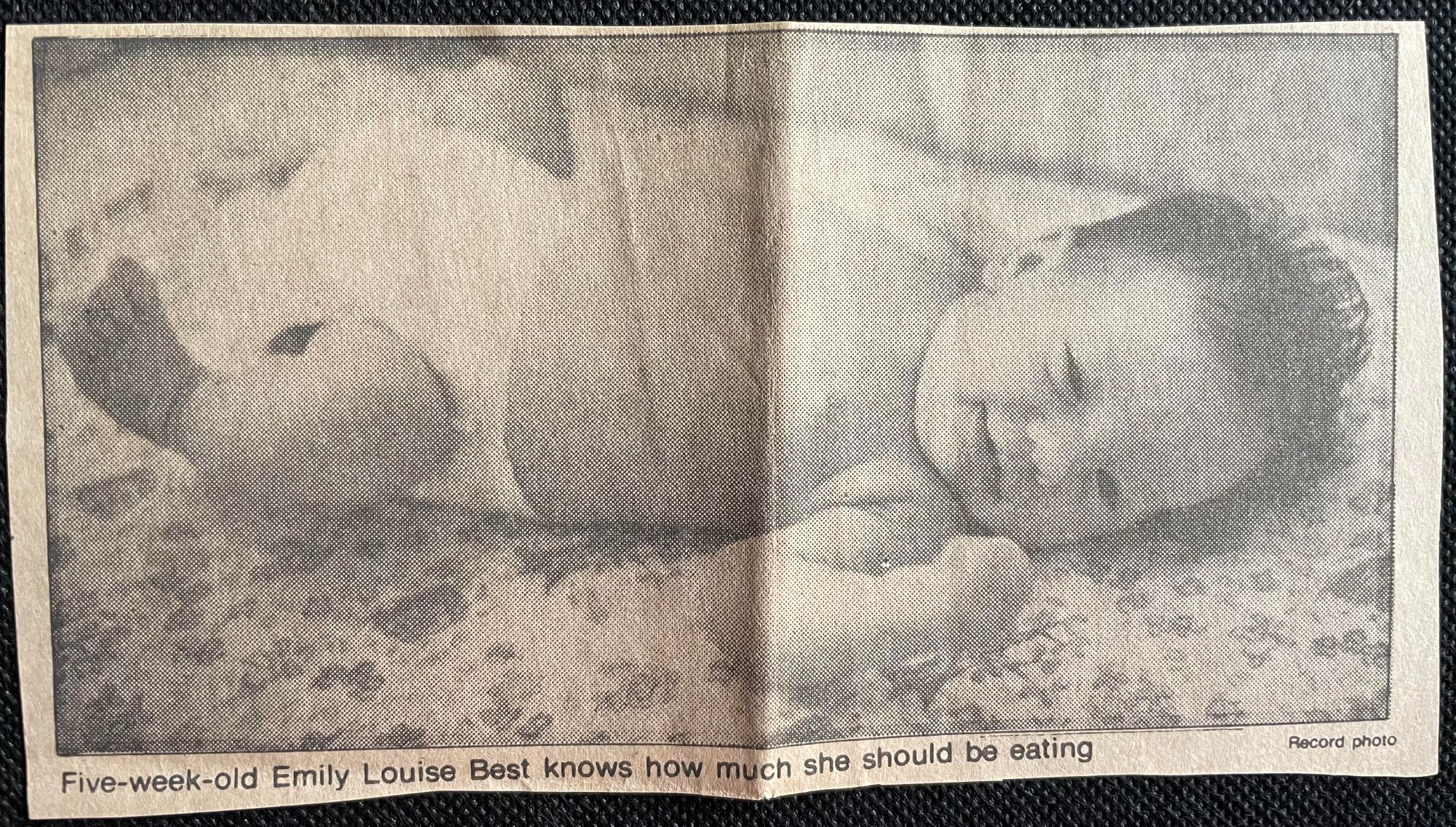
SACRAMENTO, CALIFORNIA
Once she bought a house and got married, Emily took over as manager of Moore’s Riverboat in Isleton, then as General Manager of Bistro 33 in Davis. Her management skills were at the forefront during this time, working with her staff to give them the tools they needed to succeed in the restaurant business. Unfortunately, it sometimes also included having to let staff go who weren’t showing up on time.
After leaving Bistro 33, she went back to waiting tables, helped her friends open a restaurant, and worked at a wine shop. She was also a contractor for a fiscal responsibility policy nonprofit in Sacramento, coordinating listening sessions to build consensus around policy proposals. While the work wasn’t glamorous (there was a lot of formatting and editing white papers), it continued to develop her experience in producing.
And then her stepfather got sick.
In February 2007, he was diagnosed with stomach and esophageal cancer and required 24/7 care. She stopped managing the restaurants and cared for him during the day while her mother worked. She continued contracting with the nonprofit, though, along with waiting tables at a French bistro called Waterboy, among other jobs.
And all through this, she was also helping her father, now in New York City, running the strategy consulting startup, Best Partners, doing research and producing reports.
You would think through all this strife, her new husband would be a supportive presence in her life. But that wasn’t the case.
“My stepdad was proceeding through the process [of cancer] with such clarity and bravery and humor, and my ex-husband was behaving with a level of selfishness that the comparison between the two was hard to square,” she explained. “So, for the first time I got a therapist, and I put us in marriage counseling. I remember walking in the door, sitting down, bursting into tears, being like, ‘I think I have to get divorced.’ I knew it already. I just needed a safe place to say it out loud.”
At the same time, her father was going through a divorce of his own, and she was flying out to New York City to help him on that front as well.
It was on one of these trips in fall 2007 that her inner artist got some major encouragement. While in the city, her father invited her to audit a musical theater class he was taking. The class required each student to prepare a song, and they would workshop their singing with the teacher, ending with each student performing. Emily always wanted to try Adelaide’s Lament, from Guys and Dolls, so at the end of this class, she performed it.
“I finished the song, and this woman, who I would later learn is a massively famous Italian pop star, says to me, ‘You clearly do this for a living,’” she said. “And I said no, I wait tables in Sacramento. Everyone in the room was like, ‘You’re fucking out of your mind.’ It gave me the confidence that maybe there was an artist in there that still needed some cultivation.”
With that motivation in place, her work with her father increasing, and her stepfather recovering from his cancer after a year of treatment, she realized New York City was where she wanted to be. At the end of 2007, she got divorced, sold her house, and headed to the Big Apple, moving all her things into a college friend’s spare bedroom.
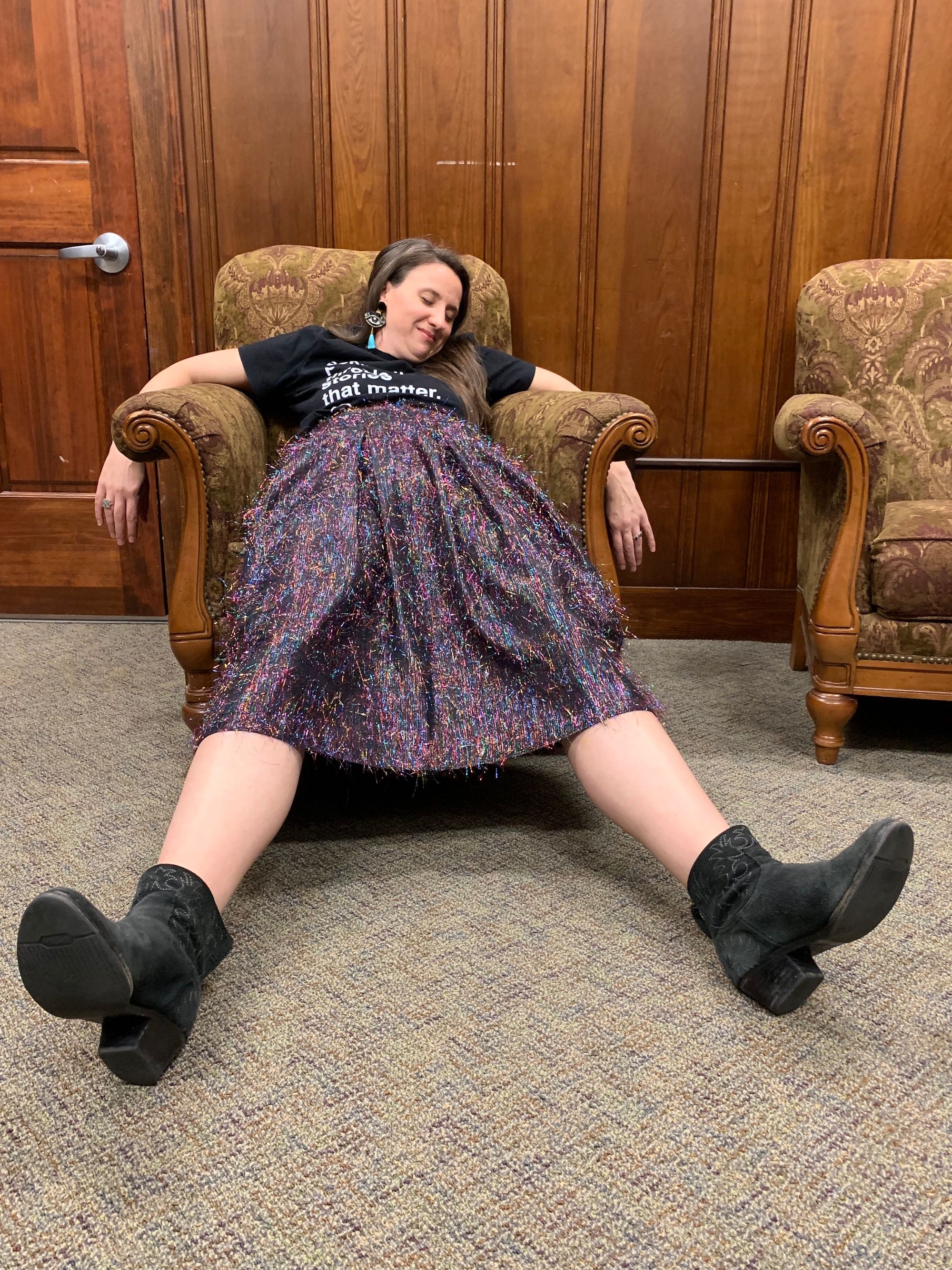
NEW YORK, NEW YORK
Emily’s dad had lived here since 1995, so the city wasn’t a new place. She considered it a home of sorts by that point. And while she was waiting tables, she got her first C-suite experience here, working at Best Partners.
“I was just sort of COO,” she said. “I was the operations and the back end. I set it up as a business. I worked with the clients. I did smaller jobs. Whatever it took to run it.”
And she gained priceless experience in the position.
“It was really gratifying in so many ways,” she said. “I got into so many rooms that I didn’t have the credentials to be in, and I was able to be educated. I just learned so much about how to read a room, how to understand the room.”
As with her other stops, she worked at a restaurant called Anissa, and it was here she found the catalyst for her continued artistic evolution:
Fellow waitstaff who also worked as actors.
One coworker invited her to an acting class taught by famed coach Tony Greco, whose students included Philip Seymour Hoffman, and she studied with him for four years. She auditioned for musical theater, but was eventually cast in Surrender, an immersive theater production about the Iraq War.
“It was just a wild, fun, drunk, and crazy time,” she said. “And it was improvised, so we rehearsed for months because we were basically inventing it as we went along.”
Since it was a 45-person cast, things could be a little disorganized. She started showing up, asking how she could make things more efficient, how she could move things along.
And this is where she could combine her business acumen with her love of the arts for the first time. She helped produce the second run of Surrender.
“We did around 65 shows at the end of the day,” she said. “And that was when I learned there was a place for me in the world. There’s a job for me. That really was transformational.”
From that point, she produced theater with her own theater company, and then by joining the Private Theater Company, where she would meet the woman who’d become her best friend, actress Caitlin Fitzgerald.
And then Emily’s life changed when Caitlin lied to her.
Drunk one night after a theater performance, they were upset about how women couldn’t be real friends in film and television. Their friend group was one of “creative, dynamic, amazing, explosive women,” in different stages of life, with their lives and careers taking off in all different directions. They were talking about what they would do about this incorrect portrayal of women on screen, and Caitlin announced the lie—
“We should make a movie ... it’s so easy.”
“And the rest is literally fucking history,” Emily said. “That is where it all started.”
Caitlin invited her to the set of Edward Burns’ Newlyweds, a feature film she was acting in, shot on a Canon 5D DSLR camera. Emily was able to see a movie produced with only two people: someone with a camera, someone covering sound. She felt confident.
“I was like, yeah, I can do this,” she said.
Caitlin and their director, Caroline von Kuhn, wrote an indie drama called Like the Water, about a journalist who travels home to Maine to write and deliver the eulogy for her best friend. And her cinematographer, Eve Cohen, made it very clear that to make a film like this, they’d need much more than a DSLR and a sound person. So, Emily headed into the Northeast to produce Like the Water, her first feature.
And immediately ran into financial issues.
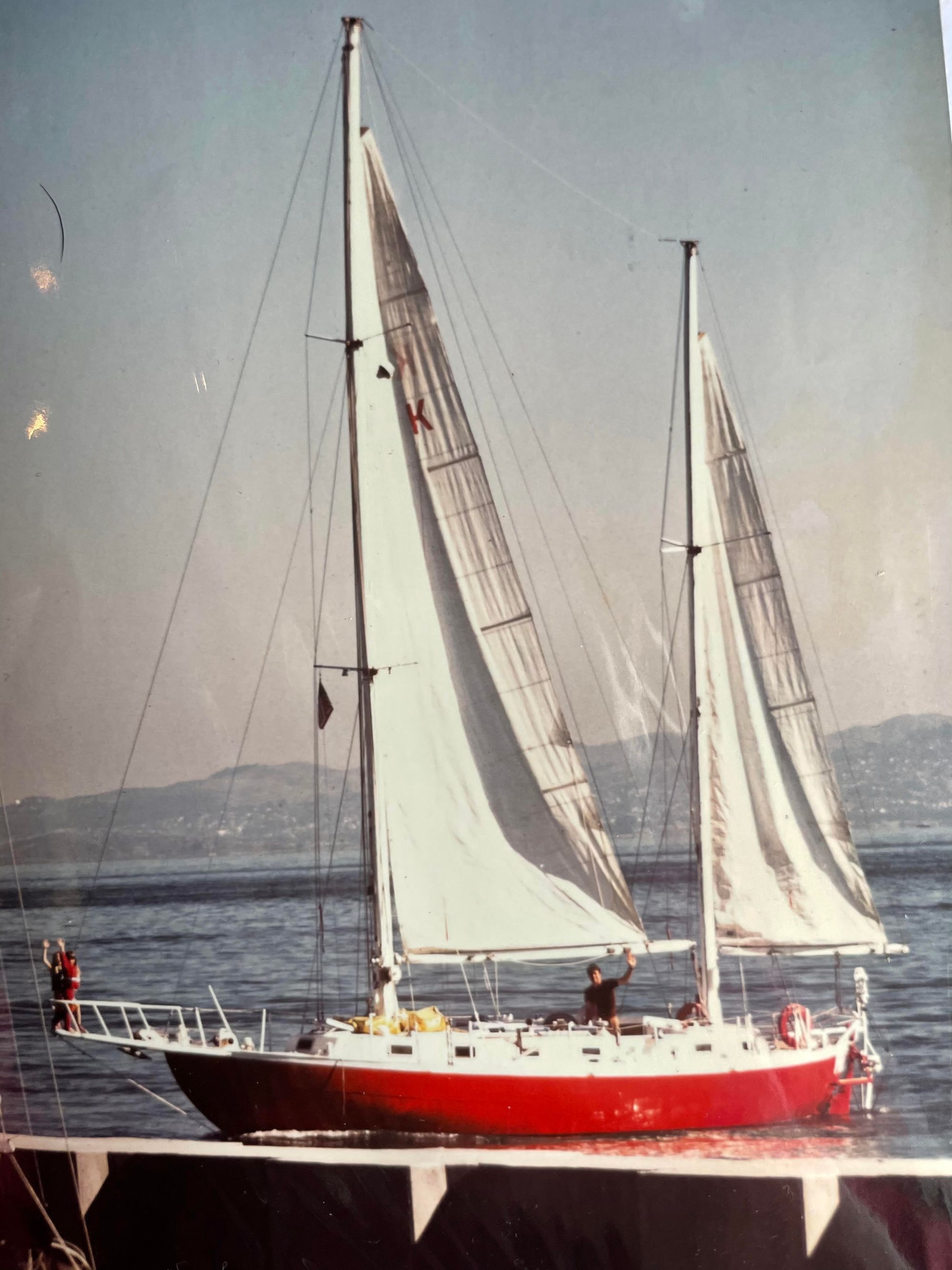
CAMDEN, MAINE
Once she arrived for production, Like the Water represented a milestone moment for Emily. It was her first time working on a project that combined her love of business, the arts, and empowering a marginalized community by providing honest portrayals of women onscreen.
But even though she raised $65,000 in equity financing, her budget was still $29,000 short. With two months to go before production, she tried something new—she put a wish list together of all the production items they would need, structured like a wedding registry, and sent it to every person who knew one of the six-woman production team.
And did that wish ever come true. Her crowdfunding effort raised $23,000, along with hundreds of thousands of dollars of in-kind contributions from people in midcoast Maine and all over the country. This allowed them to complete production.
It was official. Emily Best was a film producer.
She created a production company: she called it Seed&Spark.
PARK CITY, UTAH
In January 2012, Emily attended the Sundance Film Festival, her slate of new film projects in one hand and a mockup for her crowdfunding idea, the "Independent Media Wish List," in the other. She showed it to anyone who would talk to her. And she learned a few things. First, that crowdfunding, though not without challenges, was working. And second, that independent film distribution was broken.
“Every single person I talked to was like, it’s the distribution, I don’t know what to do, I have no control,” she said. “What was crazy to me about that was we were in the room where it happens, where all the stuff was supposed to be happening, and most people were just hanging out there, waiting to get picked.”
And that’s what brought everything together.
“I think that was when I started to admit to myself that we weren’t going to just launch a crowdfunding platform; we were going to have to start to address distribution,” she said.
And this was the moment that connected everything. Her aptitude at running a scalable business. Her love of the arts. And her passion to assist underserved communities.
Her production company Seed&Spark now became a startup crowdfunding and distribution portal.
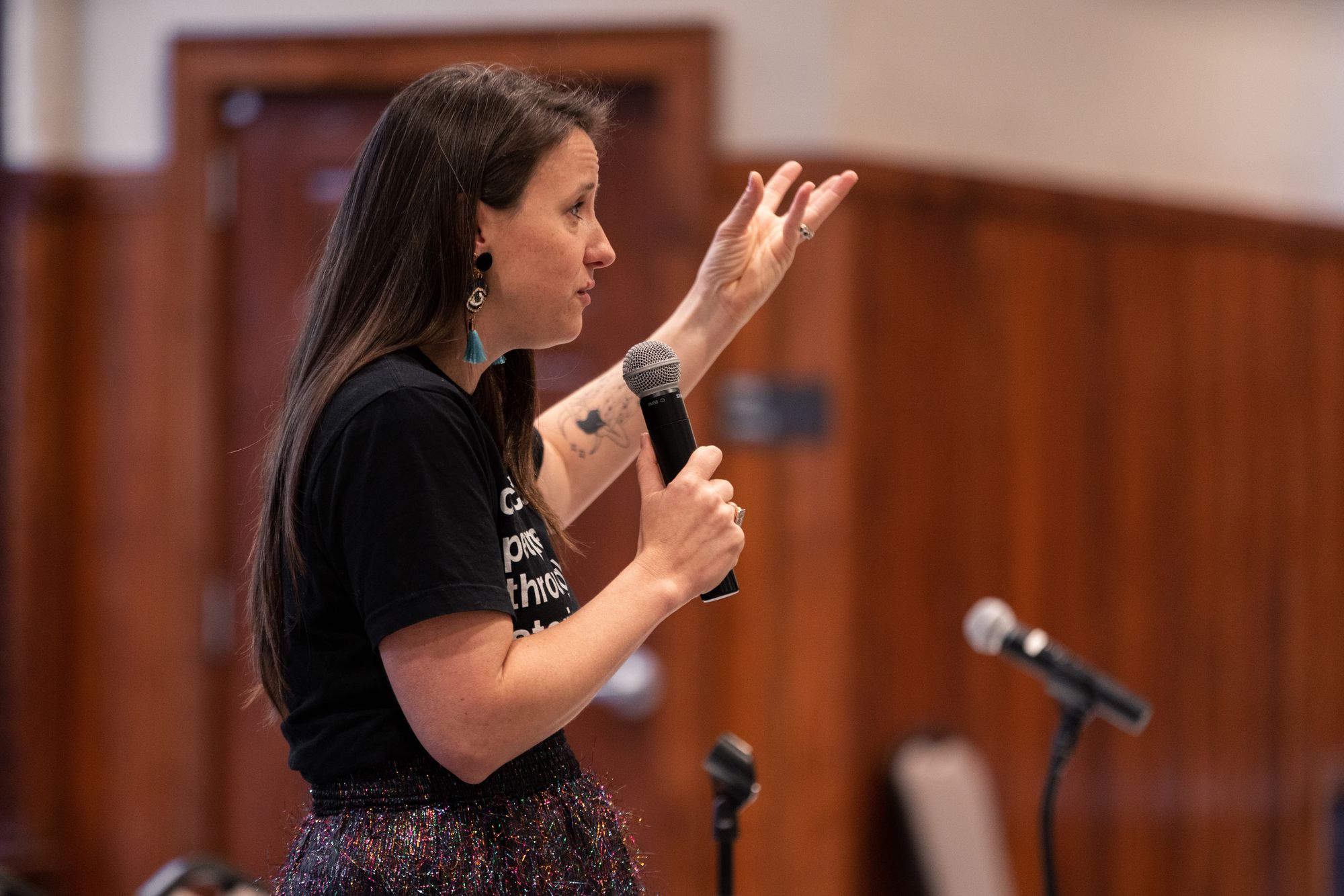
NEW YORK, NEW YORK (... part two)
Once back home, the new company quickly took shape.
She received her first investment in May 2012 from an adviser—a $125,000 check that she learned about while waiting tables. And that work would continue, since all of that money would go into building the business.
Emily ran the company from the city until mid-2013, when her boyfriend’s family wanted to move to California. That forced her to relocate to San Francisco, while her boyfriend lived in Sacramento, and she was “really, really, really unhappy.” She eventually moved east to Sacramento, but when a friend offered her his L.A. apartment to live in, she jumped at the chance. Her boyfriend wasn’t thrilled. They broke up about a year later.
But she kept an office in Brooklyn, at the IFP Made in New York Center, where two other employees worked full-time. And while there, in winter 2014, they held the first of thousands of educational seminars about “Crowdfunding to Build Independence."
“We got asked the same questions over and over, and we weren’t getting asked the stuff we believe was really important,” she explained. “That workshop was a chance for us to get ahead of the pipeline and to set people up to actually succeed in all the material ways they needed to succeed.”
That first workshop led to her running the “Stay Indie Tour,” a nationwide film festival workshop series, in fall 2014, to help get the word out about Seed&Spark.
In spring 2015, she attended the Sarasota Film Festival as executive producer of Eel, a feature drama co-created by Seed&Spark co-founder James Kaelan and Blessing Yen. She came on after the film was finished, to help with film festival strategy. Eel actor Brennan Kelleher was also at the festival, and when they met, he made quite an impression on her. They started dating in summer 2015.
Then, that September, she found out she was pregnant.
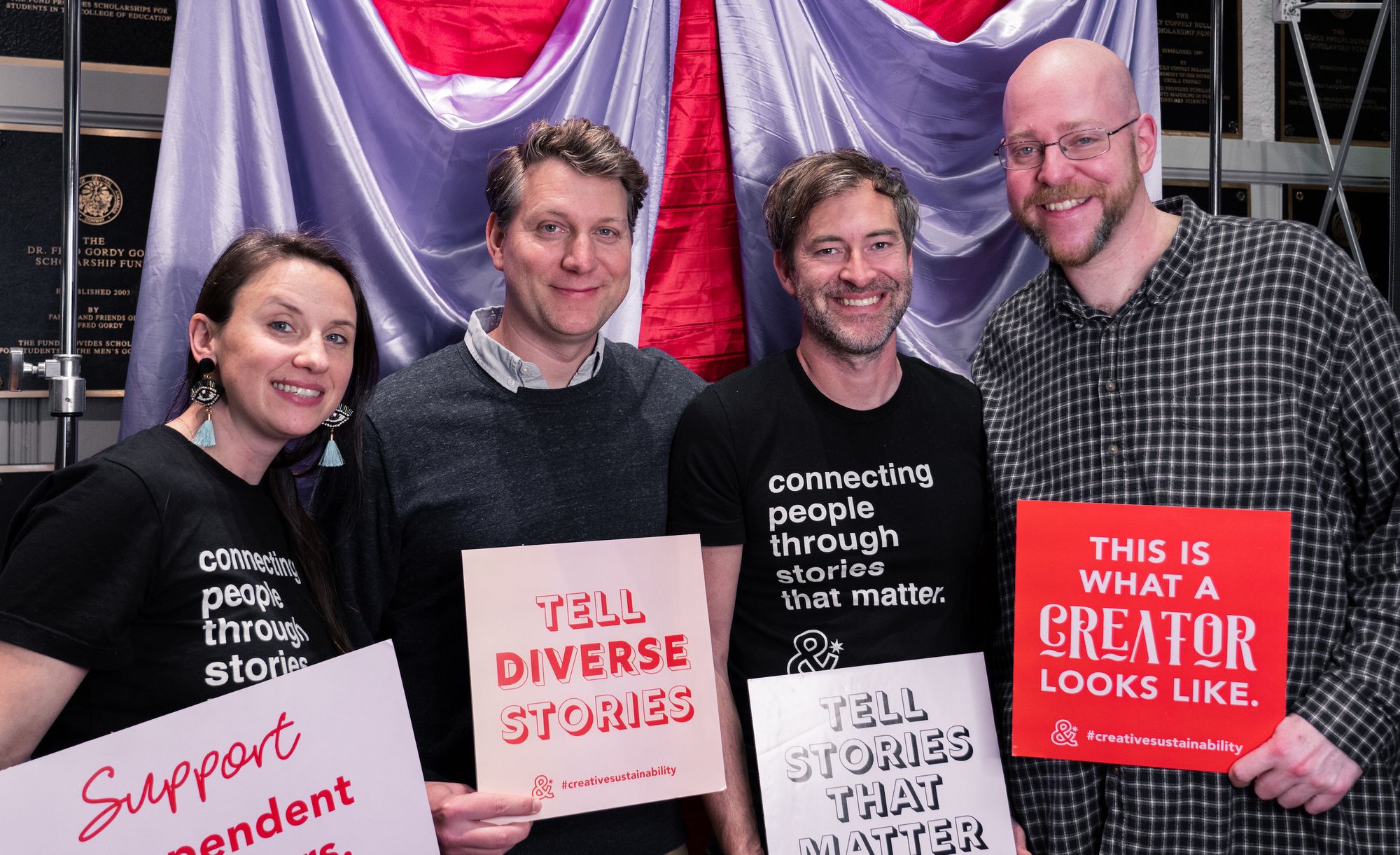
LOS ANGELES, CALIFORNIA
Emily and Brennan came to a quick mutual decision about their future.
They went away for 24 hours after he found out about the pregnancy, and when they both spoke the next day, they both decided they wanted to keep the baby.
But Emily’s grueling travel schedule, in support of the business, took a heavy toll. A few weeks later, while teaching Crowdfunding to Build Independence at the Camden International Film Festival, she began hemorrhaging from a miscarriage.
“I was lucky because Caitlin was there for the festival, so I was with my very, very dear friend in a very, very safe place while all this was happening,” she said. “But my poor boyfriend was on the other side of the country, being like ‘I guess we’re having a miscarriage, and you’re not even here.’”
She went back home to Los Angeles and took some time off. Took care of her body. And then they tried again. And she got pregnant again. Reason to celebrate.
But in-between her pregnancies, she had agreed to sign up for TechStars, a startup accelerator in Boston for early-stage companies looking for guidance and financing. She faced the beginning of the accelerator at 16 weeks pregnant.
BOSTON, MASSACHUSETTS
After closing a $500,000 bridge round for Seed&Spark, Emily attended TechStars expecting big success. As she described in her Medium post “How Raising a $2 Million Seed Round Really, Actually Went”
“Right before we left for the program, a large strategic investor based in New York had made a visit to our office in Los Angeles, met the entire team, and said they wanted to lead a $2M round on a $10M valuation. They were going to go back and see if their participation would be $1M or more. I floated into TechStars, ready to circle the wagons to close out that round.”
She was able to make some headway for the business, including signing a huge sponsorship deal with MasterCard. But her big institutional investor went totally silent and would not respond to her messages, for the length of TechStars and for long after. When the program ended in June, she left with great friendships—and a large number of rejections.
LOS ANGELES, CALIFORNIA
Summer 2016 was busy.
Emily got engaged to Brennan on July 3. She married him on July 22. And she gave birth to a son, Cody, on August 1. That part of the year was full of bright, personal moments.
But at the beginning of 2017, despite her best efforts at fundraising, Seed&Spark was out of money. She had to let go of three employees and have the rest accept pay cuts to stay afloat. A similar experience to her time managing restaurants, but this time, it was awful.
“At the restaurant, it was like, ‘You showed up late six times after I gave you several warnings.’ It was really easy,” she explained. “This was because I failed to raise the money. I failed to get us there. It was a very, very different encounter. It was brutal and painful.”
That wasn’t all. Brennan was acting in a play in Baton Rouge, Louisiana, and the house she was renting was being sold. She was alone with a seven-month-old, having to move herself.
A year later, she found herself in the same situation. Trying to fundraise. And again in 2019.
“There were basically three Februaries in a row where we had to do bonkers belt-tightening,” she said. “Because crowdfunding is a cyclical business. We actively tell people to not crowdfund in December, which means we don’t have much in the way of crowdfunding revenue in January.”
She also gave birth to a daughter, Mina, in January 2019, returning to work twelve days later with the baby in tow. In the middle of more belt-tightening.
“I kind of broke my body because I was recovering from that,” she admitted. “I was really questioning my choices.”
And soon after, her grueling travel schedule returned. In fall 2019, she traveled seven consecutive weekends, requiring Brennan to care for a three-year-old and an infant.
But the company persevered. They launched crowdfunding rallies with the Duplass Brothers, and they started offering Creative Sustainability Summits, where actor/filmmaker Mark Duplass teamed up with filmmakers nationwide to teach crowdfunding and distribution seminars, along with screenwriting and project development workshops. They started in Milwaukee in fall 2019, then did summits in Los Angeles and Conway, Arkansas in 2020.
Momentum, finally.
Then: the pandemic.
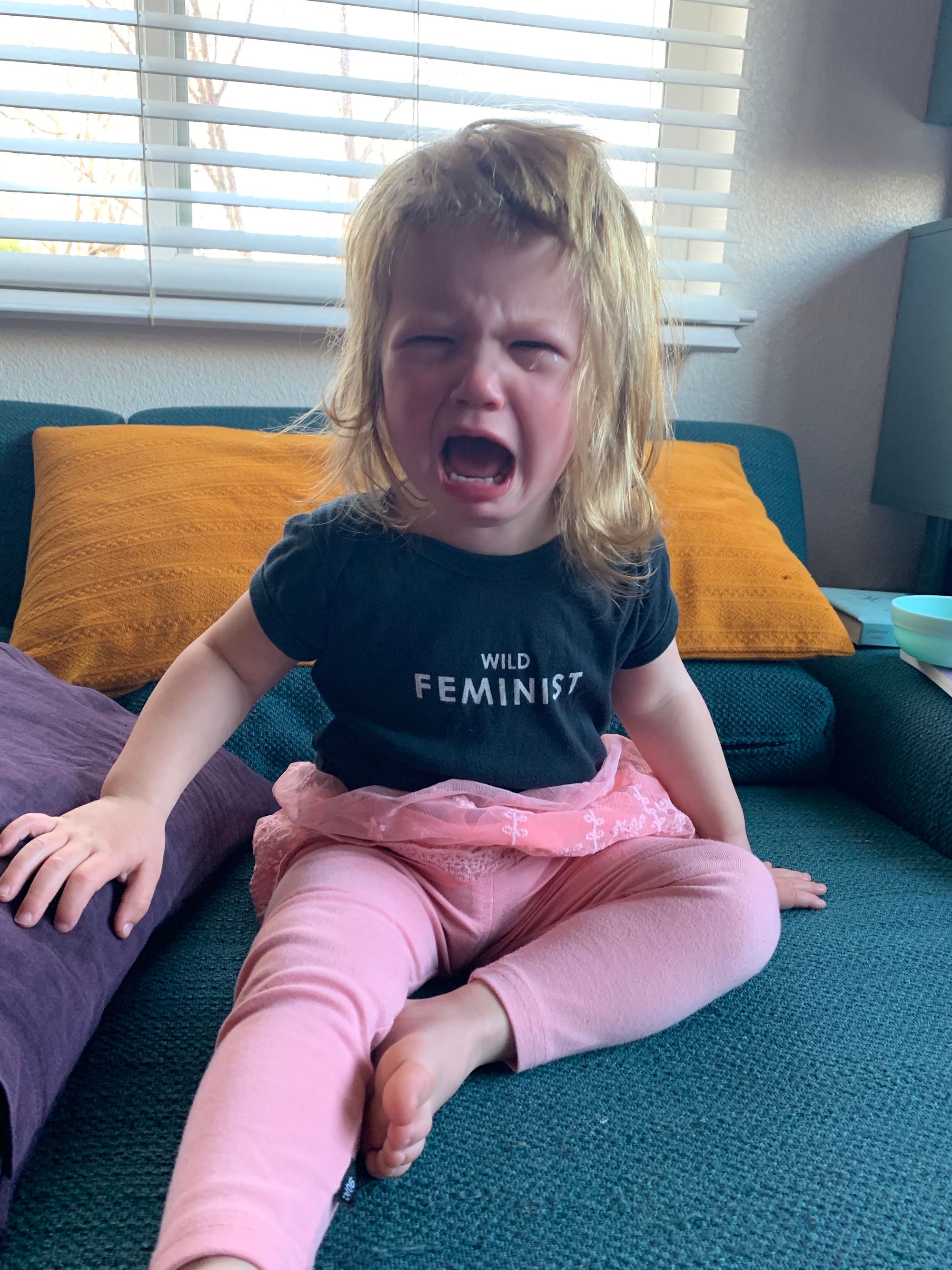
SACRAMENTO, CALIFORNIA
Emily convened her team to discuss the company’s future amidst a worldwide emergency. They replaced lost revenue with new ideas, including creating a platform to support virtual film festivals, and she decided to keep her team together, no matter the risk to the long-term health of her business. A decision that, she said in her Medium article The End of Mentorship, “no matter what happens, I will never regret it for as long as I live.”
Other changes quickly followed.
Seed&Spark would become an all-virtual company, with her employees working around the country.
She moved with Brennan and her children back to Sacramento, where they could be with her mother and quarantine as a family.
And she’s made a bold new decision for where her company is headed.
Seed&Spark is ending their streaming service, sending their library to the streaming service IndieFlix. In its place, the company will refocus their distribution efforts around programs that use independent film as part of workplace training programs. Born out of the pandemic, they’ve found new success in this area, and Emily is psyched about her company’s new path.
“I no longer believe the entertainment business has solutions for the thing we are interested in solving—helping movies shift culture,” she said. “And if you want them to shift culture, they have to shift behavior. And if you want to shift behavior, you have to be a lot more intentional than just showing people a movie and hoping that worked. Because our paradigm now is that movies get delivered to people who are already likely to see them through social media and streaming algorithms. Those algorithms are built to benefit advertisers and platforms, not stories and storytellers.”
That led the Seed&Spark team to create a workplace education program, one that she discovered companies had a huge appetite for, mostly because of inferior workplace education content.
“We’re just curating films out of our universe and bringing them into corporations, and we’re able to literally track how these movies are changing people’s behaviors and the organization’s behaviors,” she explained. “And then we’re sending way more money back to our creators than we ever were with our streaming platform. It’s a whole new market.”
As Emily navigates 2021, she’s continuing to lead Seed&Spark—that perfect blend of business, the arts, and helping the underserved community of independent creators. And while her journey lays out some clear lessons, she’s learned a few big ones along the way:
Staying curious. Surrounding yourself, and listening to people who have different opinions from you. Realizing how much you have to learn.
“The truth is that nobody knows what they’re doing at any given moment because they’re in a place they’ve never been before,” she said. “And we don’t give ourselves a lot of credit for being in moments of learning, of saying there’s just so much more I need to know to get the next place.”
“I would say learning how to create a process of informing my intuition. So making a practice of talking to people around me who are more expert in different things. Making sure my friend group is diverse and my team is diverse, so that as I’m informing my opinions, I’m also training my own gut. I think that has helped me the most at this point.”
But all that advice, while helpful, can’t solve every problem. The reality is her chosen life is hard.
“I’ve lost decades of sleep,” she said. “I haven’t really slept well since I started making Like the Water, if I’m honest. And then you bring kids into it, it’s like a whole other level. But my dad gave me solemn advice. When the going gets tough, just do the next right thing right.”
So, she perseveres. All to support the practice of, handling her next challenge with focus and resolve. Like her fateful trip with her father. Steering whatever waves lie ahead. Because as a business owner, artist, wife, and parent in the pandemic, the one constant is they just keep coming.
“I’ve been sailing on the edge of the waves for a long fucking time.”
*Feature Image: Emily Best / created for Pipeline Artists by Graham Sisk

